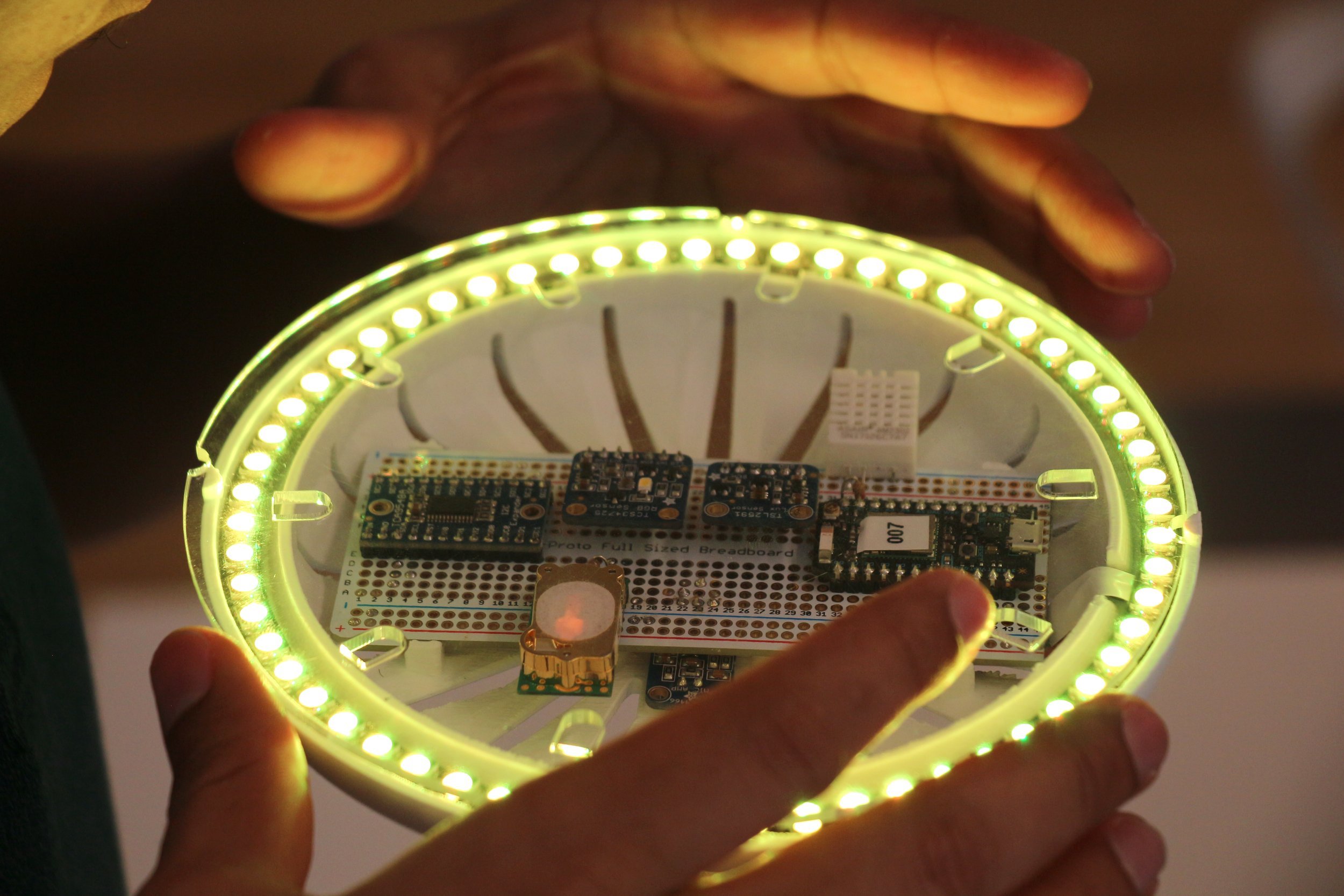
CELIA
Bringing architecture to life through the Internet of Things
CELIA is an illuminated, kinetic ceiling at the base of the newly constructed Ping An Asset Tower in Shenzhen, China enabled by state of the art Internet of Things (IoT) technology. Short for Computer enhanced, luminous interactive architecture, CELIA processes sensor data to generate its intricate motion and lighting patterns in response to human movement and the building’s internal systems. Stemming from the Latin meaning “heavenly”, CELIA is a connection to the digital world, reflected above our own.
Planetworks served as the design architect of the overall tower while developing and prototyping CELIA as a showcase of the building’s innovative technologies.
CELIA: How we brought a building to life
BUILDINGS have skin, skeletal structures, even respiratory and circulation systems - but, lacking a central nervous system, buildings are inanimate. In early brainstorming, we looked at examples of bioluminescence in nature - simple creatures like jellyfish - ultimately finding inspiration in a morning glory which opens and closes with light and time.
The ability to sense and respond is one of the indicators of life. We felt that, not only could we animate a building by providing it with a primitive nervous system, we could make it appear as if the building is communicating.
We leveraged our team’s early exploration with Internet of Things (IoT) technology - a distributed network of microcomputers which sense and interact in the real world.
For one of our earliest IoT prototypes, an environmental sensor named HALO [heuristic ambient luminous object], we built our own circuit boards, developed software, and 3D printed the shell. HALO never materialized as a product, but its premise was intriguing: that digital information, in this case humidity, temperature, and CO2 sensor data, could be visualized in an ambient and human-centric way using colored, emotive lighting.
We began to scale up these ideas to our real-world architecture projects, theorizing that IOT technology and ambient data visualization could ‘bring buildings to life.’
In 2017, the Ping An Asset Tower in Shenzhen, China, provided an opportunity to test our hypothesis on a building of our design. As architects of the new tower for the Ping An Group, we faced a challenge: how to increase density on the site while opening up and connecting one of the world’s busiest urban centers.
Our solution was to float the mass of the 208 meter tall, thirty-seven story tower to create an elevated public plaza which will eventually connect to Shenzhen’s pedestrian bridge network. The proposal resulted in an exposed, outdoor ceiling at the bottom of the uplifted tower - a ‘fifth facade’ absent in nearly all buildings.
The proximity of the ceiling to the elevated plaza initiated a dialogue between the building and pedestrians which we believed could be enhanced by animating the exposed surface.
We began prototyping with simple breadboards, tiny motors, and hand made wooden models which we synchronized with motion software. We tested these motions in computer animations, to visualize the final outcome.
Operating in stealth, our team in Shanghai worked with fabricators to produce several iterations over the next twelve months. Our ceiling slowly sprung to life with breathtaking results. Progress was enabled by Ping An Real Estate’s management and project team, who supported the process throughout.
The final configuration utilizes 108 moving ‘petals’ and 2,484 LED light fixtures, each individually addressable. The motion control system uses several pre-scripted paths which are triggered by real-time feedback from indoor and outdoor environmental sensors.
Currently, two operating modes are planned: first, a human-actuated mode where infrared sensors detect movement below and trigger an illuminated response, and second, a signal from the building’s mechanical systems to open up the petals and draw fresh air through the underside of the tower.






